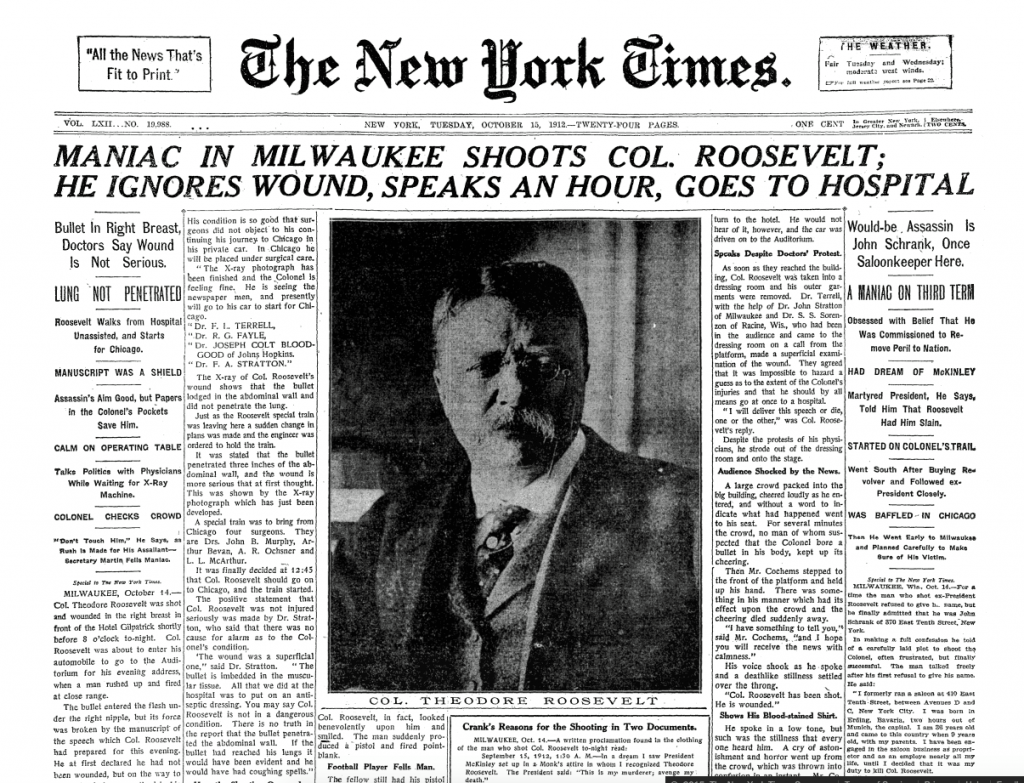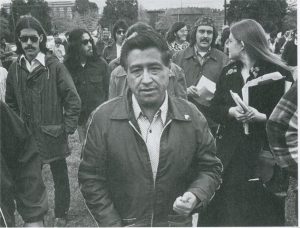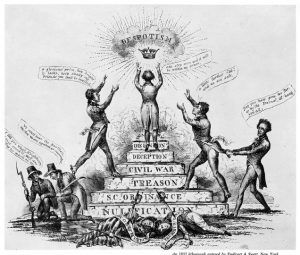Stepping into an open-air car just after 8 pm, Teddy Roosevelt stood to wave to the adoring crowd that had gathered around him. Just as he raised his hat, the shot of a .38 colt revolver rang out from no more than five feet in front of him. As he fell back into the car, the crowd quickly disarmed the would-be assassin and began to attack him.1
Many events led up to this exact moment. Nearly twelve years earlier, Roosevelt had been William McKinley’s Vice President when McKinley had died from a similar assassin’s bullet just six months into his second term. Roosevelt’s subsequent rise to the presidency upset many in his own Republican Party, due to the fact that he had been placed as McKinley’s Vice President for the sole purpose of removing him from positions of power, particularly in the New York legislature. He had been a part of New York politics off and on from the age of twenty-three. But many in his own party were unhappy with Roosevelt because of his support for political reforms that would end corruption in politics, including that of the Republican Party Machine in New York, which made most of the major decisions for the entire Republican Party. At the time, the office of Vice President was seen as a dead-end for one’s political career, because it lacked any real power; so the move to “elevate” Roosevelt to be McKinley’s running-mate in 1900 made sense for the Party Machine to support. Unfortunately for them, McKinley’s untimely death foiled their attempts to end Roosevelt’s political career, and ultimately they fast-tracked him into the Presidency at the age of forty-two, which made him the youngest person to ever be sworn-in to this position. Roosevelt went on to become the party’s undisputed leader and easily won the Presidential election of 1904. During his years in office, Roosevelt was quite the well-rounded President. He worked on everything from domestic programs regulating railroads and food to conservation acts to foreign policy, even winning a Noble Peace Prize in 1906 for his mediation of the Russo-Japanese War.2
Though, when the election of 1908 rolled around, having already technically served two terms as President and wanting to follow the precedent of not seeking a third, Roosevelt stepped aside to allow the rise of William Howard Taft, his Secretary of War, to take his place on the Republican ticket. With Roosevelt’s backing, Taft took the Presidency easily. But not long after Taft’s administration began, Roosevelt, who had become increasingly progressive in the later years of his second term, did not like that Taft’s views and policies continued to move further and further right. Not only were his views and policies moving further right, but Taft directly undermined several policies and programs that Roosevelt had approved and developed during his two terms. This prompted some in the progressive wing of the party to support a more progressive man to take his place on the Republican ticket in the election of 1912. For a while, it seemed as though Robert La Follette, a Republican Senator from Wisconsin, would become the progressive opponent of Taft, but after several missteps and his sanity being called into question, Roosevelt announced his decision to seek a third term. Support began to build for Roosevelt, and ultimately he chose to challenge Taft at the Republican National Convention, with the backing of several prominent members of the party. Roosevelt narrowly failed to secure the nomination, again because of plots against him within the Machine and the committee giving all contested delegates to Taft. After this loss, Roosevelt walked out of the convention, and immediately created his own party, the Progressive or “Bull Moose” Party, that was built on Roosevelt’s Square Deal platform focusing on helping all classes of people, not only with the support of those that backed him at the Convention, but several others as well.3 With the party bitterly split, Roosevelt did more campaigning himself than any of the other candidates, stopping in thirty-eight states. The exhaustion of all of the campaigning, and some bouts of sickness, had caused some previous speeches to be cancelled, or postponed, but, Roosevelt, determined to not cancel any more, arrived in Milwaukee, Wisconsin, on October 14, 1912, stopping first to have dinner at the Gilpatrick Hotel, before his speech. After dinner, on the way to his car, he met the assassin’s bullet.4

Immediately after the shot, Roosevelt quickly regained his footing and called the crowd off of the man. Many in the crowd even called for the man to be killed on the spot, but Roosevelt insisted he not be hurt.5 Roosevelt then attempted to determine why the assassin had fired at him, but to no avail; though, later, it was found that a note in his pocket offered a reason of sorts: John Flammang Schrank, the would-be assassin and unemployed saloon keeper, who adamantly opposed the idea of three-term presidents, had a dream in which McKinley rose out of a coffin, pointed to a painting of Roosevelt, and asked him, Schrank, to avenge his death. Once Schrank was whisked away, everyone was sure that Roosevelt would immediately head to the hospital. But, being not only a skilled hunter, but anatomist as well, Roosevelt knew that since he was not coughing up blood, his lungs had not been hit. So he decided to head on to the auditorium to deliver his speech, to the protest of most everyone.6 Upon his arrival, he did allow a few doctors to assess the wound, but they saw that his fifty-page manuscript, which had been folded in half, and his lead-lined glasses case, had slowed the entry of the bullet into his chest; and so his speech would go on.7

With a clean handkerchief pressed against the hole in his chest, Roosevelt took the stage. The first words of his speech were ones that no one in the audience fully expected: “Friends, I shall ask you to be as quiet as possible. I don’t know whether you fully understand that I have just been shot.” Shock traveled through the audience, with many even calling out that his story was fake. Opening the breast of his jacket, exposing his blood-soaked shirt, he continued, “It takes more than that to kill a bull moose.”8

Roosevelt then went on to deliver an most ninety-minute campaign speech titled “Progressive Cause Greater Than Any Individual,” that outlined his idea of “New Nationalism,” which was based on the beliefs of the safety and welfare of workers coming first before profits, the protection of property rights, and, what Roosevelt believed to be the most important, the welfare and protection of all people, no matter their class. His belief in the cause was so strong, that he even mentioned it as one of the reasons that he was still giving the speech:
“And now, friends, I want to take advantage of this incident and say a word of solemn warning to my fellow countrymen. First of all, I want to say this about myself: I have altogether too important things to think of to feel any concern over my own death; and now I can not speak to you insincerely within five minutes of being shot. I am telling you the literal truth when I say that my concern is for many other things…I am in this cause with my whole heart and soul. I believe that the Progressive movement is for making life a little easier for all our people…I am absorbed in the success of that movement.”9
He only stopped once, roughly thirty minutes in, when he was interrupted by his campaign manger who attempted to convince him to go to the hospital, but Roosevelt waved him off. Only when the speech had been given in its entirety did he finally agree to go to the hospital. There, it was revealed that the bullet had lodged itself in one of his ribs and that it did not have a chance of shifting into his lungs, leading the doctors to determine that it would be safer to leave it where it was. After one week of recovery, Roosevelt was back on the campaign trail, with just over two weeks left until the election. Unfortunately, the bitter divide in the Republican Party cost not only Taft the election, but himself as well. Had one or the other run without opposition from the other, the Republican Party may have prevailed. While Taft and Roosevelt received over fifty percent of the popular vote when combined, the Democratic candidate, Woodrow Wilson, carried forty states and won in the electoral college in a landslide, 435 to 96, combined, which may in part be due to the fact that Roosevelt was running as a third party candidate. Even though Roosevelt did not win, he had come in second place, ahead of Taft. This was the first, and only, time in American history that a third party has done as well as Roosevelt did in this election, which demonstrated just how dominate he was on the political stage. Furthermore, his larger than life personality is displayed when later asked about how he remained calm enough to deliver his speech after having been shot, let alone one of its length, Roosevelt simply stated that he had been expecting it for a while, so he wasn’t surprised, and, “In the very unlikely event of the wound being mortal I wished to die with my boots on.”10
- Robert Walsdorff, “Death-defying speech, (cover story),” Cobblestone 14, no. 3 (1993): 40. ↵
- Salem Press Biographical Encyclopedia Research Starters, 2013, s.v. “Theodore Roosevelt,” by William I. Hair. ↵
- “Progressive (Bull Moose) Party (1912),” in Guide to U.S. Elections, 6th ed, Washington, D.C., United States: CQ Press, 2010. CQ Press Voting & Elections Collection, EBSCOhost (accessed February 22, 2018). ↵
- Patricia O’Toole, “Assassination foiled: 100 years ago, Teddy Roosevelt was saved from a bullet by 50 pieces of paper,” Smithsonian, 2012, 64. ↵
- Christopher Klein, “When Teddy Roosevelt Was Shot in 1912, a Speech May Have Saved His Life,” History.com, October 12, 2012, (Accessed February 22, http://www.history.com/news/shot-in-the-chest-100-years-ago-teddy-roosevelt-kept-on-talking. ↵
- Patricia O’Toole, “Assassination foiled: 100 years ago, Teddy Roosevelt was saved from a bullet by 50 pieces of paper,” Smithsonian, 2012, 64. ↵
- Patricia O’Toole, “The Speech That Saved Teddy Roosevelts Life,” Smithsonian.com. November 01, 2012, (Accessed February 22), https://www.smithsonianmag.com/history/the-speech-that-saved-teddy-roosevelts-life-83479091/. ↵
- Christopher Klein, “When Teddy Roosevelt Was Shot in 1912, a Speech May Have Saved His Life,” History.com, October 12, 2012, (Accessed February 22, http://www.history.com/news/shot-in-the-chest-100-years-ago-teddy-roosevelt-kept-on-talking. ↵
- Henry Blodget, “Heres The Famous Populist Speech Teddy Roosevelt Gave Right After Getting Shot,” Business Insider, October 14, 2011, (Accessed February 28, 2018), http://www.businessinsider.com/heres-the-famous-populist-speech-teddy-roosevelt-gave-right-after-getting-shot-2011-10. ↵
- Patricia O’Toole, 2012, “Assassination foiled: 100 years ago, Teddy Roosevelt was saved from a bullet by 50 pieces of paper,” Smithsonian, (2012): 64. ↵



79 comments
Carolina Wieman
The beginning hook of the article is very intriguing it makes someone want to continue reading since it began at the climax. The author writes this article with facts but creates a way to make it into more of a readable storytelling type of energy. The vocabulary is very intelligent and makes it a more interesting piece to read. I also really liked the dramatic tone the author wrote when the horrible assassination was taking place.
Danielle Sanchez
This article contained excellent images that really brought the story to life. Theodore Roosevelt was waving to a crowd and raised his hat when a revolver shot at him. This was due to Roosevelt’s support for political reforms that wanted to end corruption in New York City. After Roosevelt regained his footing he noticed the crowd mobbed the shooter and asked for them to get off the man. Roosevelt then tried to understand why the man shot at him. John Flammang was an unemployed saloon keeper who did not agree with his point of view.
Ian Poll
I always find it weird how people can dream the most bizarre dreams and interpret it in a drastic way then to act on it instead of seeking a therapist. Roosevelt has an incredible amount of determination, to get shot and with the thought that a fresh bullet could cause internal injury to an organ besides his lungs, still go up for 90 minuses to give a speech. And another thing that I find strange is that doctors just left the bullet in him, I would have thought the bullet could cause the rib to be structurally unstable, but I guess not.
Isabella Lopez
Roosevelt was such an interesting person!! He lead such a intriguing life. The first scene was so well written. It felt like something out of a book or movie. What a legend for continuing to do his speech after he was shot. I think you covered a lot of history throughly. Also a good review of his political life.
Geraldine Fry
Teddy Roosevelt was so impressive that even being almost killed didn’t stop him from giving his speech. I cannot believe that they just left the bullet in him and he recovered for a little while before continuing his third-party campaign. He got second place as a third-party candidate and truly spoke of his personality and skills. Thank you for writing about him he definitely deserved an article.
Alexandra Ballard
I love Theodore Roosevelt! He’s so freaking cool and such an impressive figure in American history. Interestingly enough, I had never heard of this assassination attempt. Hearing about his background in hunting and his knowledge of anatomy was so refreshing. It seems that politicians today are just that- politicians- and nothing more. I think he really does represent the true American spirit! He wanted to deliver a speech and didn’t let anything stop him.
Olivia Gray
I personally enjoyed this article very much. I haven’t heard much about Teddy Roosevelt until I read this article. I can’t believe Roosevelt was shot and still managed to continue his speech. I am honestly shocked he didn’t die considering the fact that it hit him in the ribs. I really liked when he said “It takes more than that to kill a bull moose.” He finds some way to lighten the situation with a little humor to the crowd. Teddy Roosevelt seemed like a very smart and well rounded president.
D'vaughn Duran
This article is a great read because of how it was interested in grabbing the reader’s attention. I didn’t know this happened to Roosevelt. How he got shot and used it with his speech he had. Also, great on adding pictures of the shot and the damage (glasses case and the paper) just seeing that it’s unbelievable. Roosevelt and him were very determined his whole life. This is one light we see him and how he acts.
Nathaniel Liveris
Interesting looking into Roosevelt’s political life. His rise to power, his opponents Taft and Wilson, and the lead up to the speech itself were all interesting to read about. His speech itself was the most interesting part to me, and I found that his genuine commitment to spread more awareness about working class conditions, even to the point of risking his own safety and security, was admirable to hear about. Good article!
Tabitha Babcock
Great article! It was obviously well-researched and I loved the inclusion of the photos of the shirt Roosevelt was wearing during the assassination attempt, the glasses case, and the speech. It was crazy to me to learn that he’d been “promoted” to vice president to attempt to keep him from getting any power. That plan definitely backfired. In his speech, he says this line that struck me, “I have altogether too important things to think of to feel any concern over my own death”